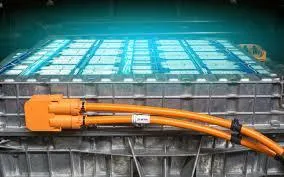Off-Grid Solar Stages
Meeting the Renewable Energy Demands of Construction Sites With Solar Power Storage

As construction sites evolve to meet modern sustainability demands, many professionals face a pressing challenge: how to power operations effectively while reducing environmental impact. Solar power storage emerges as a practical solution that not only enhances energy efficiency but also supports electric vehicles and site equipment. This article will explore the energy needs of construction, the advantages of integrating a solar system, and successful implementation strategies. Readers will discover how solar power storage can resolve energy shortages, cut costs, and align construction practices with green initiatives.
Understanding the Energy Needs of Modern Construction Sites
The energy consumption patterns in construction are complex and vary significantly across different projects. Understanding these patterns helps identify common renewable energy challenges faced by construction sites, such as reliance on traditional energy sources and the need for water in solar projects. This section will provide insights into how photovoltaic systems can reduce the carbon footprint of construction efforts.
Analyzing Energy Consumption Patterns in Construction
Analyzing energy consumption patterns in construction requires a thorough examination of how renewable energy projects integrate with existing strategies. Many construction sites depend heavily on electricity for powering tools and machinery, while also needing to manage heat produced by equipment and materials. Utilizing solar panels in combination with energy storage solutions can significantly reduce reliance on traditional energy sources, showcasing a path toward more sustainable practices within the industry.
Common Renewable Energy Challenges Faced
Common renewable energy challenges faced by construction sites include the integration of solar power systems with existing workflows and the impact of fluctuating tariffs on project budgets. For instance, projects at locations like Edwards Air Force Base highlight the necessity for reliable energy sources while adapting to regulatory changes. Ensuring a steady supply of energy storage alongside solar installations can effectively minimize reliance on traditional energy systems, ultimately paving the way for more sustainable construction practices.
The Role of Solar Power Storage in Construction
Solar power storage plays a vital role in enhancing site efficiency by maximizing energy availability and minimizing carbon emissions during construction projects. Various storage solutions, such as batteries and thermal storage systems, are utilized to harness solar energy effectively. This section will explore these types, the integration of solar with existing energy systems, and how they contribute to sustainable development in construction.
How Solar Power Storage Enhances Site Efficiency
Implementing an energy storage system at construction sites significantly boosts efficiency by ensuring a consistent energy supply regardless of weather conditions. By harnessing stored solar energy, projects can maintain operations smoothly, reducing delays and minimizing the carbon footprint of construction activities. This approach not only supports the infrastructure's energy demands but also promotes healthier work environments by decreasing reliance on diesel generators, which can harm air quality around construction zones.
Types of Solar Power Storage Solutions Available
Several solar power storage solutions are available to construction sites, each designed to optimize energy usage and support the energy transition. Battery systems, such as lithium-ion batteries, offer efficient energy storage, allowing stored solar energy to be used during peak demand periods, reducing the dependence on traditional fuel sources. Additionally, pairing solar inverters with thermal storage systems helps maintain steady energy availability with lower maintenance needs, enhancing site efficiency and contributing to a more sustainable construction process.
Integration of Solar Power With Other Energy Systems
Integrating solar power with existing energy systems at construction sites can enhance overall energy management and increase sustainability. For instance, at locations such as Edwards Air Force Base, combining solar energy with traditional power methods allows for a more reliable energy supply while reducing costs. This approach not only addresses the demands of the energy industry but also supports the transition to renewable resources in the solar power world, helping construction projects meet their energy needs effectively.
Advantages of Utilizing Solar Power Storage
Utilizing solar power storage offers significant benefits for construction sites by providing cost savings on energy supply through battery storage systems. This approach improves sustainability in projects while reducing dependence on traditional power sources. Each of these aspects enhances the reputation of construction firms, showcasing their commitment to eco-friendly practices while contributing to effective energy management through innovative storage project solutions.
Cost Savings on Energy Supply
Cost savings on energy supply are a significant advantage of implementing solar power storage systems at construction sites. By integrating photovoltaic technology, these systems allow projects to harness solar energy, reducing reliance on expensive traditional power sources while optimizing operational budgets. Such an approach not only aligns with sustainable practices but also positions construction firms favorably within emerging energy policies that encourage the use of renewable resources.
Improving Sustainability in Construction Projects
Improving sustainability in construction projects is significantly enhanced through the adoption of solar power storage systems. By integrating Battery Energy Storage Systems (BESS), construction sites can efficiently store clean energy, which minimizes reliance on fossil fuels, thereby contributing to lower pollution levels. This shift not only promotes cleaner energy use but also optimizes operational efficiency by ensuring that renewable energy is available even during peak demand or adverse weather conditions.
Reducing Dependence on Traditional Power Sources
Reducing dependence on traditional power sources is essential for construction sites seeking sustainable energy solutions. By implementing thermal energy storage systems alongside photovoltaic technologies from companies like First Solar, construction firms can efficiently harness solar energy, thereby minimizing reliance on diesel generators and other fossil fuel-based options. This transition not only lowers operational costs, leading to increased revenue, but also contributes to a cleaner environment, addressing key concerns for project stakeholders and local communities.
Implementation Strategies for Solar Power Storage
Effectively implementing solar power storage systems involves careful planning and design to meet the unique demands of construction sites. This includes understanding installation best practices tailored to the specific environments of Southern California and ensuring compliance with relevant regulations and standards. Topics such as tax incentives, the costs of grid energy storage, and partnerships with providers like Southern California Edison will be discussed to guide successful implementation.
Planning and Designing Solar Power Storage Systems
Planning and designing solar power storage systems involves a systematic approach to integrate battery energy storage systems effectively into construction projects. Innovative strategies must consider the specific energy demands of the site, such as those at an air force location where reliability and efficiency are paramount. By prioritizing environmentally friendly solutions, construction firms can ensure optimal performance while significantly reducing their carbon footprint.
Installation Best Practices for Construction Sites
Installation best practices for solar power storage on construction sites in California demand careful consideration of site-specific conditions and energy requirements. It is essential to position solar panels for optimal sunlight exposure, ensuring maximum efficiency of energy generation. Additionally, integrating advanced storage technology allows for effective management of energy generated from both solar and wind sources, facilitating a steady power supply that aligns with the fluctuating energy demands typical of construction activities.
Ensuring Compliance With Regulations and Standards
Ensuring compliance with regulations and standards is vital for the successful implementation of solar power storage systems on construction sites. This entails maintaining adherence to local and national guidelines related to renewable energy investments, as these regulations often dictate the proper installation and use of solar energy technologies. By utilizing accurate data on air pollution reduction and sustainability practices, construction firms can demonstrate their commitment to regulatory compliance while supporting a cleaner environment.
Case Studies of Successful Solar Power Storage Integration
This section highlights innovative construction projects that have successfully integrated battery storage solutions. It will delve into practical lessons learned from implementing battery energy storage systems, focusing on their contribution to energy development and operational efficiency. Insights from analytics will demonstrate how these projects have effectively met renewable energy demands while promoting sustainability in construction practices.
Spotlight on Innovative Construction Projects
Innovative construction projects are increasingly integrating solar power storage solutions to address the energy needs of sites effectively. For instance, one leading project implemented an electric battery system paired with specialized software to optimize energy management, resulting in a 30% reduction in reliance on traditional power sources. By utilizing a dedicated database to track energy consumption and storage levels, construction teams have successfully minimized delays and enhanced operational efficiency, demonstrating a clear path toward sustainable practices in the industry.
Lessons Learned From Implementing Solar Solutions
Implementing solar power solutions on construction sites has provided valuable insights that can enhance future projects. For example, a significant lesson learned is the importance of real-time data monitoring for energy consumption and storage, which allows teams to make informed decisions and optimize operations. Additionally, successful projects have demonstrated that early engagement with stakeholders, including utility providers and local authorities, ensures compliance and fosters support for renewable energy initiatives, ultimately driving sustainability in construction practices.
Future Trends in Solar Power Storage for Construction Sites
Emerging technologies and innovations are shaping the future of solar power storage in construction, enhancing efficiency and sustainability. Policy changes are also impacting solar adoption, driving the need for renewable energy solutions. Predictions indicate a significant transformation in the solar-powered construction landscape, reflecting an increasing commitment to environmentally friendly practices and energy management strategies.
Emerging Technologies and Innovations
Emerging technologies in solar power storage are poised to significantly transform construction sites' energy management. Innovations such as advanced battery technologies and integration with smart grid systems allow for enhanced efficiency and reliability in energy supply. For example, construction firms are increasingly utilizing artificial intelligence to optimize energy consumption patterns, ensuring that projects can adapt to fluctuating energy demands while maintaining sustainability and reducing costs.
The Impact of Policy Changes on Solar Adoption
Policy changes significantly influence the adoption of solar power storage for construction sites by shaping regulatory frameworks and financial incentives. For example, new tax credits and subsidies can lower upfront costs for solar installations, encouraging construction companies to integrate renewable energy solutions more readily. As builders prioritize compliance with evolving energy policies, they are likely to focus on solar power storage as a strategic asset that not only meets renewable energy demands but also contributes to greater operational efficiency and sustainability.
Predictions for the Solar -Powered Construction Landscape
The solar-powered construction landscape is expected to experience significant growth as advancements in technology and shifting policy frameworks create new opportunities. Increasing reliance on innovative solar power storage solutions allows construction firms to meet their energy demands while enhancing operational efficiency. As businesses adopt more sustainable practices, a growing emphasis on integrating solar systems with smart technology will streamline energy management, making it easier for construction sites to effectively allocate resources and reduce carbon footprints.
Conclusion
Meeting the renewable energy demands of construction sites with solar power storage is essential for enhancing sustainability and efficiency. Implementing solar energy solutions can significantly reduce reliance on traditional power sources, resulting in cost savings and reduced carbon emissions. Stakeholders benefit from innovative strategies that integrate advanced storage technologies and comply with evolving regulations. The commitment to renewable energy not only improves project outcomes but also positions construction firms as leaders in environmentally responsible practices.
Lifep04, also known as Lithium Iron Phosphate, is a type of lithium-ion battery that has garnered attention for its superior stability and safety compared to traditional lithium-ion batteries. This distinctive battery technology is characterized by its use of lithium iron phosphate as the cathode material, providing several advantages over other lithium-based batteries. As technological advancements continue to push the boundaries of energy storage solutions, Lifep04 stands out as a leader, offering a unique combination of performance and security.
FAQS
Why is custom fabrication needed for LifeP04 Li-ion batteries?
When upgrading from lead-acid to lithium-ion batteries, several compatibility issues can arise due to the fundamental differences between these two battery technologies.
Here are the main reasons for these issues:
1. Different Voltage Profiles Lead-acid batteries generally have a nominal voltage of 2V per cell, and they are usually connected in series to create a system with a typical voltage of 12V, 24V, or 48V, depending on the application. Lithium-ion batteries, on the other hand, typically have a nominal voltage of 3.6-3.7V per cell. This means that a lithium-ion battery will require a different configuration (in terms of the number of cells) to match the required voltage of the system. If the system is designed specifically for lead-acid batteries, it may not be able to handle the voltage levels from lithium-ion batteries without modification.
2. Charging Requirements Lead-acid batteries are typically charged using a constant voltage (CV) method with a fixed charging voltage, which gradually decreases as the battery charges. Lithium-ion batteries require a more precise charging profile that involves both constant current (CC) and constant voltage phases. Lithium-ion batteries also need more sophisticated charging circuits to prevent overcharging and to monitor each cell's voltage. This difference means that the charging system for a lead-acid battery may not be suitable for lithium-ion batteries without upgrades or modifications.
3. Battery Management System (BMS) Lithium-ion batteries often come with a Battery Management System (BMS) that monitors individual cell voltages, temperatures, and overall battery health to ensure safe operation. Lead-acid batteries typically do not have this kind of system, as they are simpler and do not require the same level of monitoring. If you switch from lead-acid to lithium-ion, the existing system may not support the BMS needed for lithium-ion batteries, which could lead to safety risks or improper functioning.
4. Energy Density Differences Lithium-ion batteries have a much higher energy density compared to lead-acid batteries. This means that for the same amount of energy storage, a lithium-ion battery will be smaller and lighter. However, if the system wasn’t designed with the energy density of lithium-ion batteries in mind, it might not be able to properly utilize the higher capacity or efficiently manage the increased performance.
5. Discharge Characteristics Lead-acid batteries have a relatively flat discharge curve, meaning their voltage stays relatively stable until the battery is nearly depleted. Lithium-ion batteries have a steeper discharge curve, where the voltage drops more rapidly as they discharge. This difference in how the batteries deliver power can cause issues with devices or systems that were designed for lead-acid batteries, as they may not function correctly with the voltage variations from a lithium-ion battery.
6. Size and Weight Considerations Lead-acid batteries are typically much bulkier and heavier than lithium-ion batteries for the same energy capacity. This difference could affect how the battery is mounted, distributed, and integrated into a device or system. While lithium-ion batteries are lighter and more compact, the system might need adjustments or modifications to accommodate the different physical dimensions and weight distribution. Solutions for Compatibility Upgrading the charging system: Ensure the charging system is compatible with lithium-ion battery requirements, including proper voltage and current control.
Using a compatible Battery Management System (BMS): Install a BMS to handle cell balancing, temperature monitoring, and voltage regulation. Reconfiguring voltage setups: Adjust the battery configurations (number of cells in series and parallel) to ensure the system matches the required voltage. Reassessing space and mounting options: Modify or adapt the space and mounting for the smaller, lighter lithium-ion batteries.
Overall, while upgrading from lead-acid to lithium-ion offers significant benefits (like lighter weight, better efficiency, and longer lifespan), it often requires system modifications to accommodate the different properties of lithium-ion technology.

Why is lithium-Ion upgrades so complicated?
Lithium-ion upgrades are complicated because they involve several interrelated factors:
Battery Chemistry: Lithium-ion batteries have a specific balance of materials and chemical reactions that allow them to store and release energy. Changing the battery’s design or chemistry can impact performance, safety, and longevity. Compatibility: Upgrading a lithium-ion battery requires ensuring it works well with the existing system (like a phone, laptop, or electric vehicle). Different devices use different voltage and power requirements, so you need a battery that matches those specs.
Safety: Lithium-ion batteries are sensitive to temperature, overcharging, and physical damage. Upgrading requires addressing potential risks like overheating, fires, or leaks. Any change to the battery or its charging system must consider these hazards.
Cost and Materials: The materials used in lithium-ion batteries are expensive and sometimes scarce. Upgrading typically involves sourcing higher-quality components that could be costly and difficult to find.
Regulatory and Environmental Concerns: Lithium-ion batteries are subject to strict environmental and safety regulations, so any upgrade needs to comply with these standards, which can vary by region or application. In short, upgrading lithium-ion batteries is challenging due to the need for precise balancing of chemistry, safety, cost, and compatibility with existing technology.
Will upgrading to a lithium-ion battery improve my systems performance or battery life?
People often wonder if switching from an older battery technology (like nickel-cadmium or nickel-metal hydride) to a lithium-ion battery will provide significant improvements in how long the battery lasts between charges, how quickly it charges, or how it performs overall in their devices -Yes, it will!


